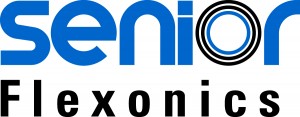Pressure
Senior Flexonics pressure ratings are in accordance with industry-wide good practice and are consistent with the requirements of the Standard Code for Pressure Piping and the ASME Boiler and Pressure Vessel Code, Sec. VIII. Maximum Working Pressure:
Maximum operating pressure to which the hose should be subjected. It is established at 25% of the Nominal Design Burst Pressure. The hose may be deflected within the specified bend radius range.
Maximum Proof Pressure:
Maximum test pressure to which the hose should be subjected. It is established at 150% of the Maximum Working Pressure with the hose installed straight. No harmful deformation shall occur. Hydrostatic field tests of hose assemblies installed in varying degrees of radial bend or parallel offset should be limited to 120% of the maximum rated working pressure at 70°F, or 150% of the actual operating pressure, whichever is lower.
Nominal Design Burst Pressure:
The pressure at which the hose can be expected to rupture, based on the minimum annealed ultimate tensile strength of the braid wire and corrugated hose alloys at 70°F and the hose installed straight.
Pulsating or Shock Pressure:
When pulsating, surge or shock pressures exist, such as occur due to fast closing valves, the peak pressure shall not exceed 50% of the Maximum Working Pressure. Installation shall be such that there is no initial slack in the braid when the pressure pulse, surge or shock occurs.
Pressure Relative to Unbraided Hose:
At Maximum Working Pressure, 1 to 2.5 % elastic elongation will occur in unbraided hose assemblies. To avoid squirm, unbraided hose should be unrestrained at one end, or installed in such a manner as to allow free axial expansion due to pressure, as in a 180° loop.
Pressure Relative to Braided Hose:
Whenever appreciable internal pressure is applied to a corrugated metal hose, it will elongate unless restrained. Generally this restraint is provided by a wire braid sheath over the hose. The braid has little effect on bending or flexibility of the hose. However, in extremely short lengths of braided and pressurized hose, additional bending forces are required because of braid friction. Where the strength of the braid sheath is the limiting factor, additional working pressure may be gained by using a heavier than standard single braid, or two or more braids. However, when the hoop rupture strength of corrugated hose is the limiting factor, no additional pressure resistance is gained with additional braids. Contact Senior Flexonics Engineering for braid/hose design assistance to determine maximum pressure ratings at lowest total cost for an application.
Pressure Relative to Temperature:
For operating temperatures in excess of 70°F, the tabulated pressures must be decreased in accordance with the “Conversion Factors” (refer to Temperature Conversion Calculator). Since the pressure ratings are based on annealed material properties, no reduction in pressure ratings is necessary for fitting attachment by TIG welding, brazing, silver brazing, or soft solder.
